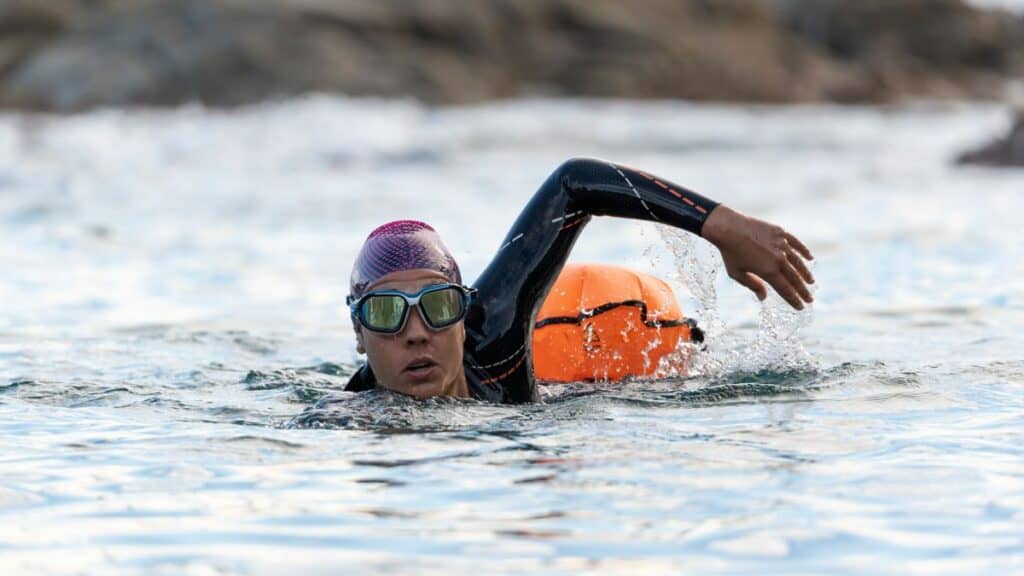
Have you ever wondered if your precious belongings would survive a water adventure unscathed? Imagine the relief of knowing that your gear remains dry and secure, even in the midst of a watery mishap.
In this post, we’ll dive into the question many outdoor enthusiasts ask: do dry bags float?
Dry bags are designed to float in water due to their waterproof construction and sealed closures. This buoyancy ensures that the bag remains on the water’s surface, keeping its contents dry and easily accessible even in wet conditions.
Keep reading to learn more about the factors that can affect a dry bag’s ability to float, as well as what you can do to help them float better!
Do Dry Bags Float?
Dry bags are a common accessory for outdoor activities such as camping, kayaking, and rafting. They are designed to keep your gear dry and protected from water damage.
One common question people have is whether dry bags float. The short answer is yes; most dry bags do float.
However, there are factors that can affect their floatation!
Factors that Affect Dry Bag Floatation
The floatation of a dry bag depends on several factors, including the material, size, weight, and the amount of air inside the bag.
Dry bags made of lightweight materials such as nylon or PVC tend to float better than heavier materials like canvas or leather.
Additionally, larger dry bags tend to float better than smaller ones due to their increased volume.
Another factor that affects floatation is the amount of air inside the bag. A dry bag that is not properly sealed or has a leak will not float as well as a fully inflated one.
It is important to ensure your dry bag is properly sealed before using it in water.
How to Ensure Your Dry Bag Floats
To ensure that your dry bag floats, there are a few things you can do. First, make sure that your dry bag is made of lightweight material and is the appropriate size for your needs.
Next, ensure that the bag is properly sealed and has no leaks. You can do this by inflating the bag and submerging it in water to check for air bubbles.
Another way to increase the floatation of your dry bag is to add air to it. Most dry bags have a valve that allows you to inflate the bag with air.
By doing so, you increase the volume of the bag and improve its floatation. However, be careful not to overinflate the bag as this can cause it to burst.
How to Make a Dry Bag Float
Dry bags are essential for keeping your belongings dry while kayaking, rafting, or any other water activity. But what happens if your dry bag falls out of the boat or capsizes? Will it float?
The answer is yes, dry bags do float, but there are ways to make them float better.
One way to ensure that your dry bag floats is to pack it properly. Make sure to leave some air inside the bag when sealing it. The process of sealing a dry bag traps air inside the bag, which makes it buoyant.
If you have a lot of gear to pack, consider using multiple smaller dry bags instead of one large one. This will distribute the weight and make it easier for the bags to float.
Another way to make your dry bag float better is to attach it to the boat. Most dry bags come with a D-ring or a loop that can be used to secure the bag to the boat. This will prevent the bag from floating away if it falls out of the boat or if the boat capsizes.
If you want to make your dry bag float even better, you can add some extra buoyancy. One way to do this is to put some foam or an inflatable pillow inside the bag. This will displace some of the water and make the bag more buoyant.
However, be careful not to over-pack the bag with too much foam or other bulky items, as this can make it difficult to close the bag properly.
In summary, dry bags do float, but there are ways to make them float better. By packing the bag properly, attaching it to the boat, and adding some extra buoyancy, you can ensure that your belongings stay safe and dry even in the event of an accident.

Can I Swim with a Dry Bag?
Swimming with a dry bag is a common practice among open-water swimmers, triathletes, and adventure seekers. Dry bags are designed to keep your belongings dry while you are in the water, but can they also be used as a flotation device?
The answer is yes, you can swim with a dry bag, but it is important to keep a few things in mind.
First, not all dry bags are created equal!
Some dry bags are designed specifically for swimming and have features like a waist belt or shoulder strap to make it easier to swim with. Others may not have these features, which can make swimming with them more difficult.
Secondly, it is important to remember that dry bags are not designed to be used as a flotation device. While they may provide some buoyancy, they are not a substitute for a life jacket or other flotation device.
Finally, it is important to make sure that your dry bag is properly secured before you start swimming. A dry bag that is not properly sealed can fill with water and become heavy, making it difficult to swim.
Make sure that your dry bag is properly sealed before you start swimming.
Conclusion on dry bags floating
Dry bags are an essential piece of gear for anyone who spends time on the water. They are designed to keep your valuables and gear dry, even in the wettest conditions.
One of the most commonly asked questions about dry bags is whether they float or not. The answer is yes, dry bags do float.
The reason dry bags float is that they are designed to be airtight. When you seal a dry bag, you trap air inside. This air provides buoyancy, which keeps the bag afloat. In the event of a capsize, your dry bag will remain floating, making it easy to retrieve.
It’s important to note that not all dry bags are created equal. Some are more buoyant than others, depending on the materials used and the size of the bag. It’s always a good idea to test your dry bag before heading out on the water to ensure that it floats as expected.
In addition to providing buoyancy, dry bags also offer protection against water damage. They are an essential piece of gear for anyone who spends time on the water, whether you’re kayaking, canoeing, or stand-up paddleboarding.
With a dry bag, you can keep your valuables and gear safe and dry, no matter what the weather throws your way.
Overall, dry bags are an essential piece of gear for anyone who spends time on the water.
They are designed to keep your gear dry and provide buoyancy in the event of a capsize. With a wide variety of sizes and styles available, there is a dry bag out there to suit every need and budget.
If you found this article helpful, make sure to take a look at some of my other dry bag articles linked below!
